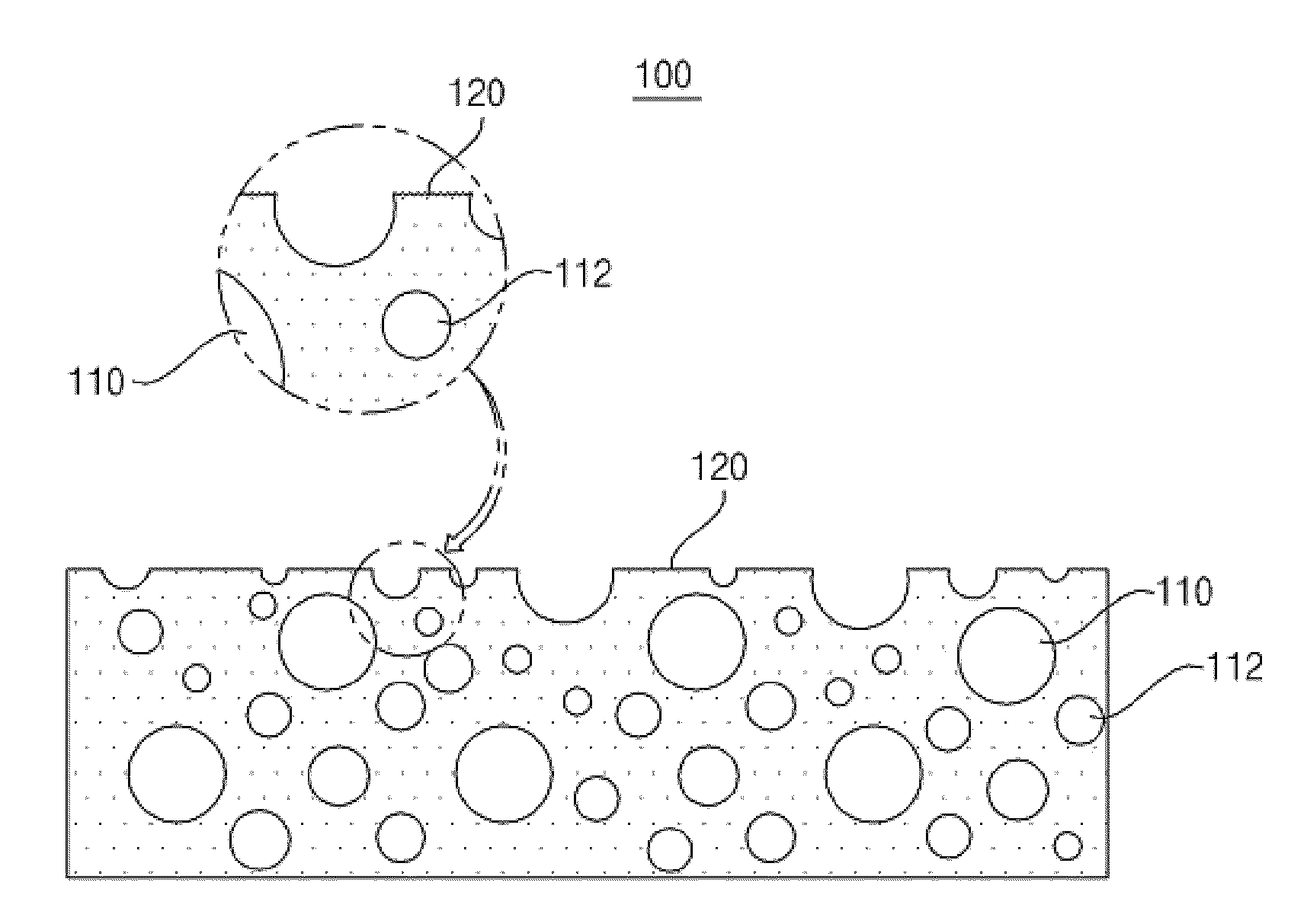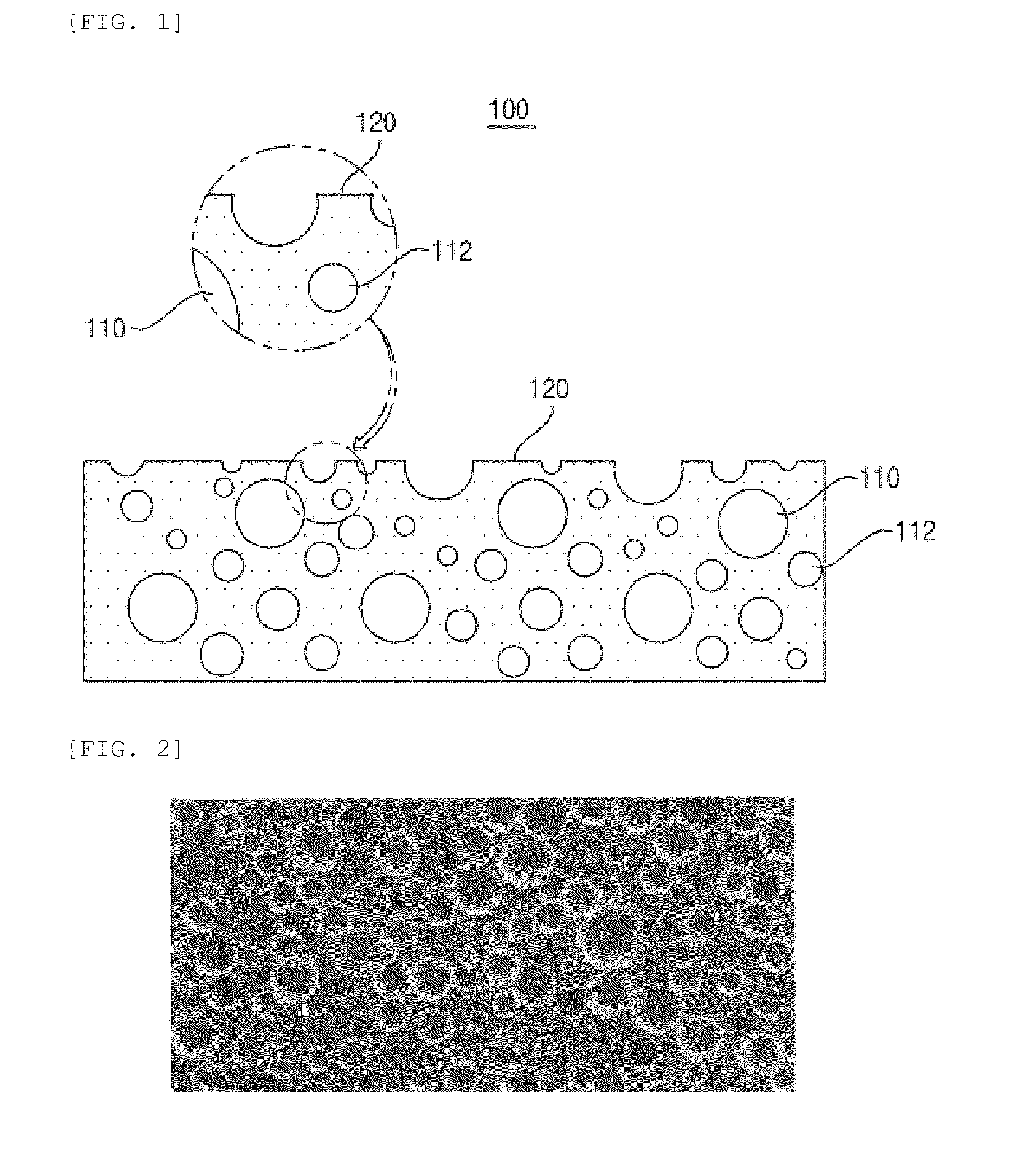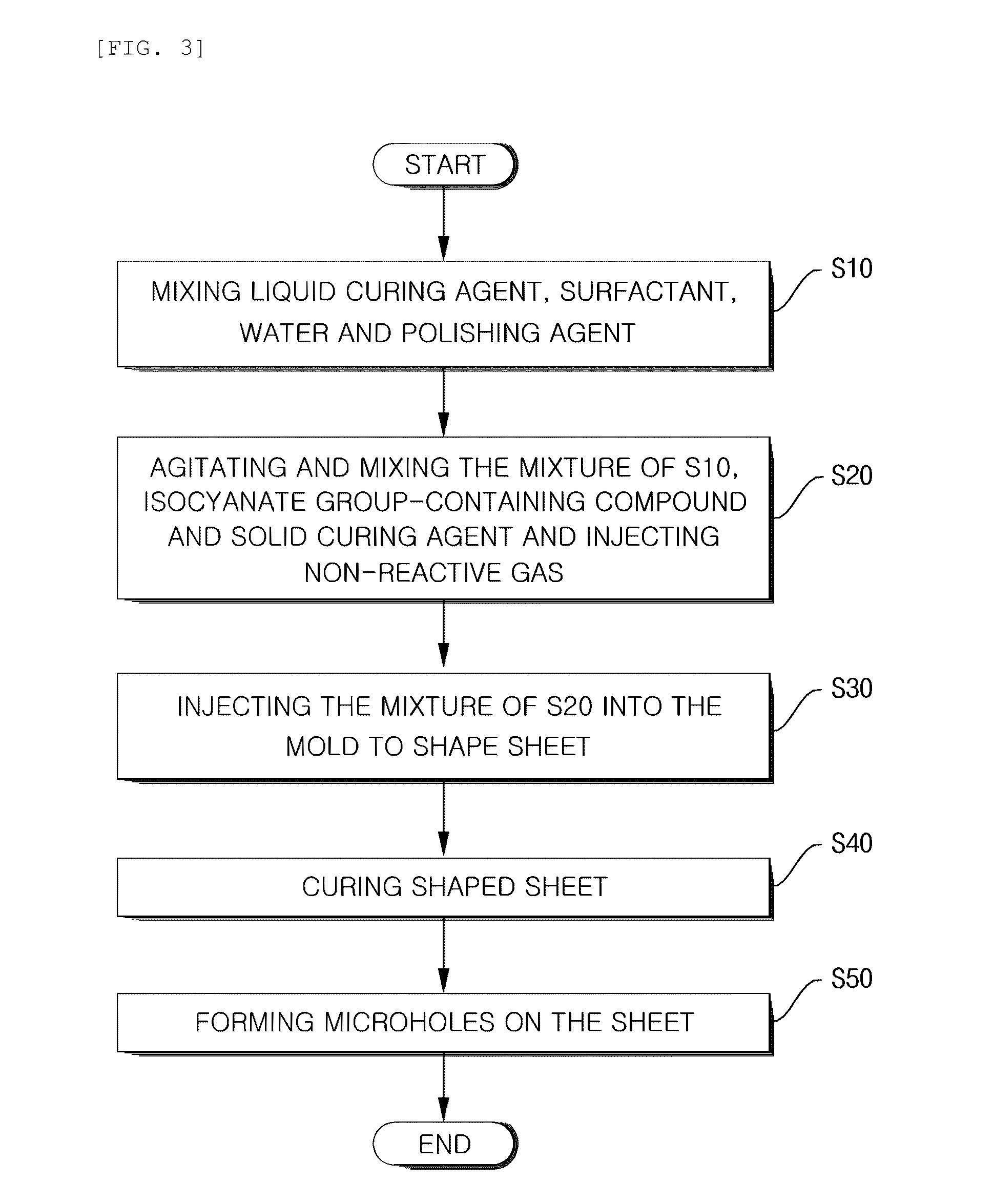Polyurethane porous product and manufacturing method thereof and polishing pad having polyurethane porous product
a technology of polyurethane and porous products, which is applied in the direction of frictional elements, grinding devices, manufacturing tools, etc., can solve the problems of affecting the difference in density and hardness, and the deviation of the conjugation solution, so as to improve the uniformity of the material plane, and improve the polishing efficiency
- Summary
- Abstract
- Description
- Claims
- Application Information
AI Technical Summary
Benefits of technology
Problems solved by technology
Method used
Image
Examples
example 1
[0107]After 3 part by weight of silicon-based non-ionic surfactant [trademark: SH-193] that included the hydroxyl group was added to 100 parts by weight of the isocyanate group end urethane prepolymer [Adiprene L-325 (NCO 9.2%)] and mixed, they were mixed, reacted, and defoamed at about 70° C. for 2 hours. After the reaction solution was transported to the air nucleation type of the high rate agitation & injection apparatus, while 24 parts by weight of the solid curing agent [MOCA] that was dissolved beforehand in 120° C. was added, the N2 gas that was the non-reactive gas was supplied by using the mass flow meter and mixed therewith under the process condition of the injection amount of the N2 gas of 0.5 l / min, the discharge amount of the mixture including a non-reactive gas of 5 kg / min, the N2 gas supply pressure of 5 bar, and the agitation rate of the high rate agitation & injection apparatus of 5,000 rpm, and the discharged mixture was injected into the mold and cured at 100° C....
example 2
[0109]After the polyurethane porous product was manufactured by using the same process as Example 1, the microhole was formed by coating the dimethylformamide (DMF) solution on the surface thereof using the gravure printing roll of 200 mesh, leaving it for 2 min, and drying it at 80° C. Thereafter, the polishing pad was manufactured by performing the slicing process through the same method as Comparative Example 1.
[0110]Next, after the groove was formed by using the same method as Comparative Example 1 on the polyurethane porous product, the polishing pad was manufactured, and the polishing was performed under the same polishing condition as Comparative Example 1.
examples 3 to 6
[0111]After the silicon-based surfactant and the liquid curing agent [Etacure-300] were mixed and defoamed at 40° C. for 1 hour and transported to the high rate agitation & injection apparatus, the isocyanate group end urethane prepolymer and the solid curing agent [MOCA] were added thereto and mixed, and simultaneously the N2 gas was injected thereto and mixed therewith. Also, the mixture including the N2 gas was discharged and injected into the mold. Thereafter, the polishing pad was manufactured by using the same method as Example 1, and the combination amount of each component is described in the following Table 1.
TABLE 1MassCuring agentflow(parts bymeterUrethaneweight)controlAgitationprepolymerEtacure-(N2 gasrateGravure(L-325)MOCA300Surfactantamount)(rpm)printingComparative10026.2—DC 192 1—900XExample 1Comparative100—21DC 192 3—900XExample 2Example 110025—DC 193 30.5 l / min5,000XExample 210025—DC 193 30.5 l / min5,000XExample 3100204.3DC 193 30.5 l / min5,000◯Example 410013.210.5DC ...
PUM
| Property | Measurement | Unit |
|---|---|---|
| particle diameter | aaaaa | aaaaa |
| width | aaaaa | aaaaa |
| width | aaaaa | aaaaa |
Abstract
Description
Claims
Application Information
 Login to View More
Login to View More - R&D
- Intellectual Property
- Life Sciences
- Materials
- Tech Scout
- Unparalleled Data Quality
- Higher Quality Content
- 60% Fewer Hallucinations
Browse by: Latest US Patents, China's latest patents, Technical Efficacy Thesaurus, Application Domain, Technology Topic, Popular Technical Reports.
© 2025 PatSnap. All rights reserved.Legal|Privacy policy|Modern Slavery Act Transparency Statement|Sitemap|About US| Contact US: help@patsnap.com



